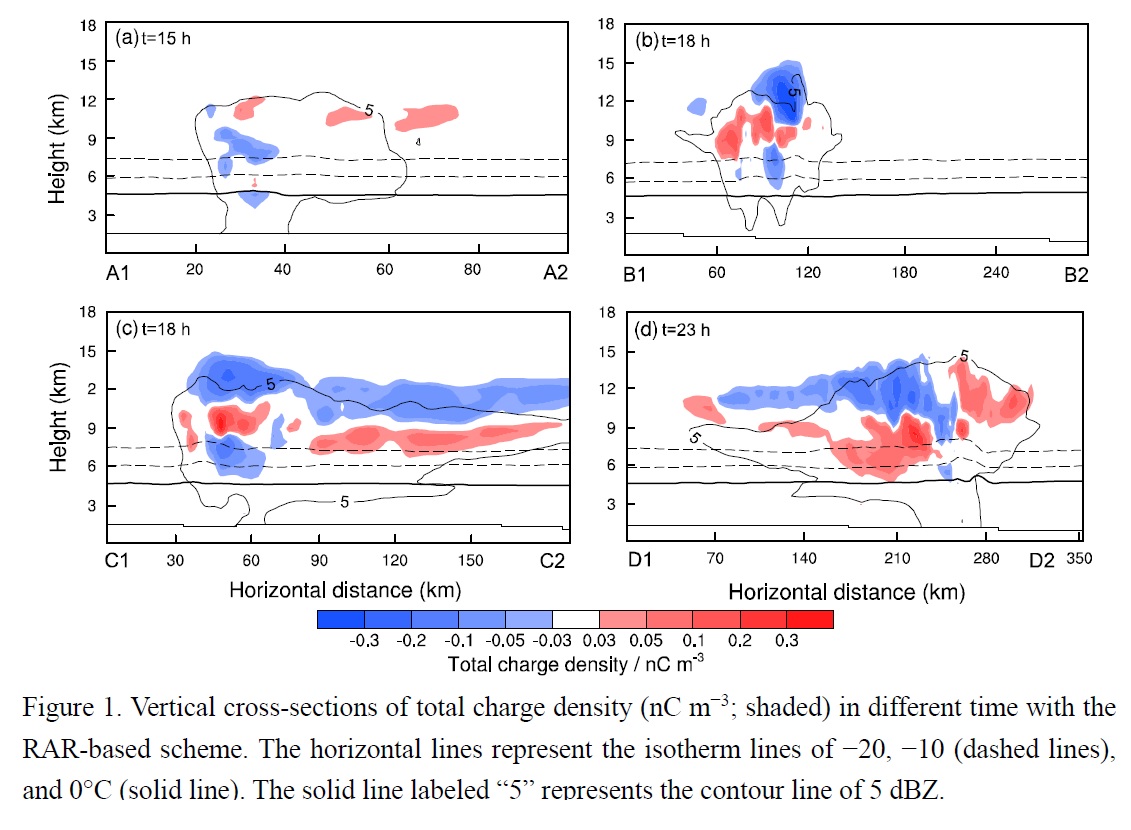Graphical Abstract
Xu, L., Y. Zhang, F. Wang, and X. Cao, 2019: Simulation of inverted charge structure formation in
convective regions of mesoscale convective system. J. Meteor. Soc. Japan, 97, 1119-1135.
https://doi.org/10.2151/jmsj.2019-062
Graphical Abstract with highlights
Plain Language Summary: The inverted charge structure of a mesoscale convective system is simulated using the Weather Research and Forecasting (WRF) model coupled with electrification and discharge processes. The evolution of a normal–inverted–normal charge structure in the convective region can be reproduced only by the rime accretion rate (RAR)-based electrification scheme. The results reveal that the inverted charge structure is caused by the strong updraft, high LWC and high RAR, which appear above the height of the −20°C layer.
Highlights:
- The evolution process of a normal–inverted–normal charge structure in the convective region of a mesoscale convective system is successfully simulated by an electrification and discharge model.
- A positive graupel charging region is generated above −20°C layer due to the strong updraft (>16 m s−1), high LWC (>2 g m−3) and high RAR (>4.5 g m−2 s−1), resulting in the inverted tripole charge structure.
- In the high plains of the United States, the microphysical-derived mechanism is responsible for inverted charge structure, while the dynamical-derived inverted charge structure is more likely in North China.







